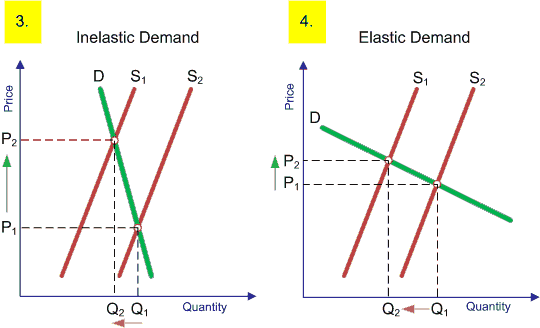In the past week, we have been learning the concept of
elasticity and inelasticity. We have learned about how different people have
their own ways of looking at how far they are willing to spend on a certain
product. As discussed in class, elasticity is known for one in which price
change brings about a greater proportional change in the quantity that the consumers
demand while with inelasticity, instead of a greater proportional change, the
price change brings about a smaller proportional change in the quantity that
consumers demand.
In one of
our previous classes we were to watch a video about the “life changing” Tummy
Tuck jeans, also known as “the most uplifting jeans in the world.” These jeans
were targeted towards women over 40 years old and the company suggested selling
the jeans for about $100 per pair. The only reason why they suggested selling
the jeans for that price was because the CEO of the company has a daughter who
believes that women all over the world of all ages, races, religions and background
have trouble reducing weight on their tummy and therefore, cannot wear the
jeans they long to wear. The demand for these jeans is inelastic because no
matter what the price was, women over 40 are willing and able to purchase these
jeans even during an economic recession.
Another
article that was found was about the Prime Minister of Malaysia announcing that
the subsidy for the sugar will be cut down by Rm0.20 (0.07 Canadian) per kg
meaning that the price of the sugar will be raised by that amount for every kg.
From the history of Malaysia based on the article, the price of sugar increased
4 times in the past three years or so. According to the Prime Minister, the
price of the sugar was raised because there were too many people with diabetes. A good example to apply this was comparing the two chocolates: Kit Kat and
Cadbury. Price elasticity of demand of Kit Kat chocolate refers to the extent
of change in price of a product demanded by buyers in response to the change in
its prices. When the
price increases from RM5 to RM6, the quantity demand decreases from 100 units
to 70 units. The total revenue decreases from RM500 (RM5 x 100units) to RM420
(RM6 x 70units), it shows that the price is elastic. Due to the fact that Kit
Kat is more popular, the quantity is responsive to price changes. When the price
of Cadbury increase from RM5 to RM6, the quantity demand decreases from
100units to 90units. The total revenue increases from RM500 (RM5 x 100units) to
RM540 (RM6 x 90units), it shows that the price is inelastic. Since Cadbury isn’t
as popular as Kit Kat, its quantity is less responsive to price changes. After
reading this article, price elasticity of demand is very useful in helping brainstorm
price strategies for a product. It can help managers and owners realize how
changes in price of a product will affect the quantity being sold.
In
conclusion, it’s nice learning about the price elasticity of demand because it’s
crazy how much quantity can be affected when there is a change in price. I
personally am a part of the big portion that will not pay if prices increase. The
only time I would pay is if it’s reasonable and I know what it is worth.
Work Cited
"The Malaysian Insider." Sugar 20 Sen Dearer from Tomorrow (2012): n. pag. The Malaysian Insider. 28 Sept. 2012. Web. 17 Nov. 2013
"Subsidy of Sugar ,price Elasticity of Demand of Kit Kat and Cadbury." Web log post. Talk About Economics. N.p., 28 Oct. 2012. Web. 17 Nov. 2013.

No comments:
Post a Comment
Note: Only a member of this blog may post a comment.